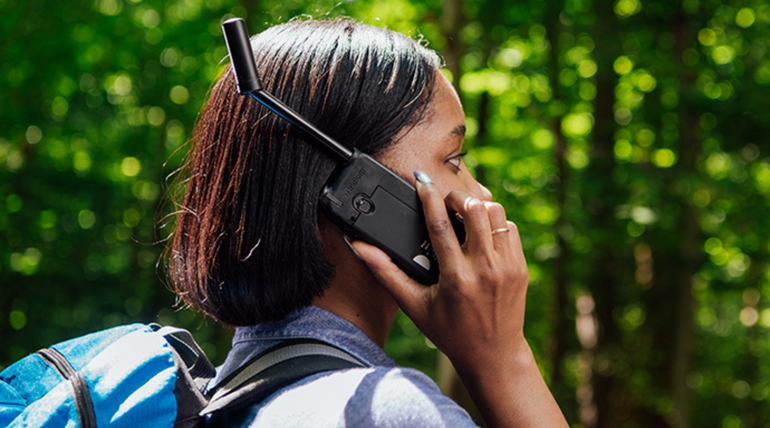Satellite Phones vs. Satellite Messengers | Which One Do I Need?
For anyone venturing beyond the reach of traditional cell coverage, whether that's hiking remote trails, camping in the wilderness, or managing assets in the field, staying reliably in touch with key contacts such as colleagues or loved ones is essential. But how do you know if you need a satellite phone or a satellite messenger?
We've put together a simple breakdown to help you choose the best tool for staying connected, safe, and in control when it matters most.
What’s the Difference?
Satellite Phones
For some people, a satellite phones might be the go-to solution when planning an off-grid expedition, trip, or project. They are a simple and effective way of making voice calls and some can even be used anywhere in the world, allowing you to make and receive calls from no matter how remote you are. Many also support SMS messaging and basic GPS functions.
Best for
- Voice communication
- Emergency calls
- Remote work sites, marine use, disaster zones
Popular Models:
-
Iridium 9555
- Global voice coverage via the Iridium network
- Compact and rugged design for field use
- View Iridium 9555 >
-
Iridium Extreme
- Integrated GPS tracking & SOS with one-touch emergency button
- Built to military-grade durability standards (MIL-STD 810F)
- View Iridium Extreme >
-
Inmarsat IsatPhone 2
- Excellent battery life (up to 8 hrs talk / 160 hrs standby)
- Reliable near-global coverage (excludes polar regions)
- View Inmarsat IsatPhone 2
Satellite Messengers
Messengers and trackers are all about tracking the individual or fixed/mobile asset from a remote location, with all data mapped and logged to an online mapping portal. These pocket-sized devices can send and receive short messages, location tracking, and trigger SOS alerts direct to an emergency response center. Most pair with your smartphone via Bluetooth and use a dedicated app for messaging.
Best for
- Messaging and check-ins
- Location tracking
- Outdoor adventures, lone workers, off-grid travel
Popular Models:
-
Garmin inReach Messenger
- Two-way messaging via the Iridium network
- Automatic SOS activation via Garmin Response Monitoring Center
- View Garmin inReach Messenger >
-
Garmin inReach Messenger Plus
- Two-way messaging as well as image file sharing and voice notes
- Built-in SOS alerting with 24/7 monitoring from Garmin Response, including real-time location sharing and confirmation messages
- View Garmin inReach Messenger Plus >
-
Garmin inReach Mini 2
- Ultra-compact, lightweight design for portability
- Built-in digital compass, GPS navigation, and breadcrumb tracking
- View Garmin inReach Mini 2 >
-
SPOT Gen4
- One-way messaging with real-time GPS tracking
- Customizable check-in and SOS functions via Globalstar network
- View SPOT Gen4 >
Key Factors to Consider
1. Do You Need to Make Phone Calls?
If voice communication is critical (e.g. in emergencies or field work), a satellite phone is the right choice.
2. Do You Prefer Lightweight, App-Based Messaging?
If you’re more interested in sending location updates, messages, and using SOS functions, a satellite messenger offers a more affordable, user-friendly option.
3. What’s Your Budget?
Satellite messengers generally have lower upfront costs and more flexible data plans. Satellite phones tend to be pricier, with ongoing costs for voice and data.
4. How Long Will You Be Off-Grid?
Both types of devices are reliable for long-term use, but messengers often offer longer battery life and compact designs, ideal for extended expeditions.
Still Not Sure? Rent Before You Buy.
At OSAT, we offer flexible rental options for both satellite phones and messengers, so you can test what works best for your needs without the upfront commitment.
Choosing between a satellite phone and a satellite messenger depends on how you plan to use it. If you need to talk, go for a satellite phone. If you're focused on tracking, texting, and SOS, a messenger is likely the better fit.
Need help deciding? Our expert team is always on hand to guide you.
Contact us today at info@osat.com







